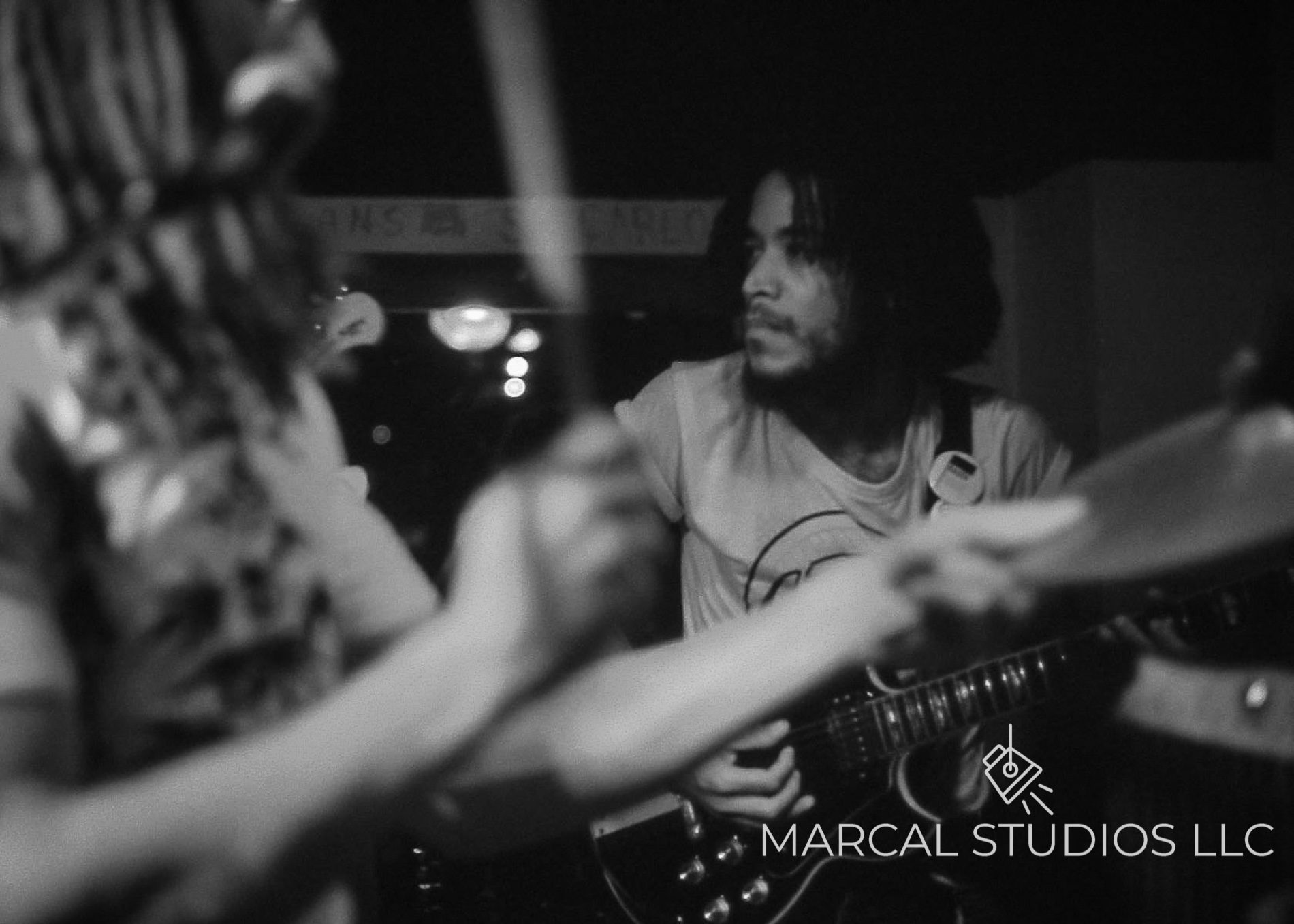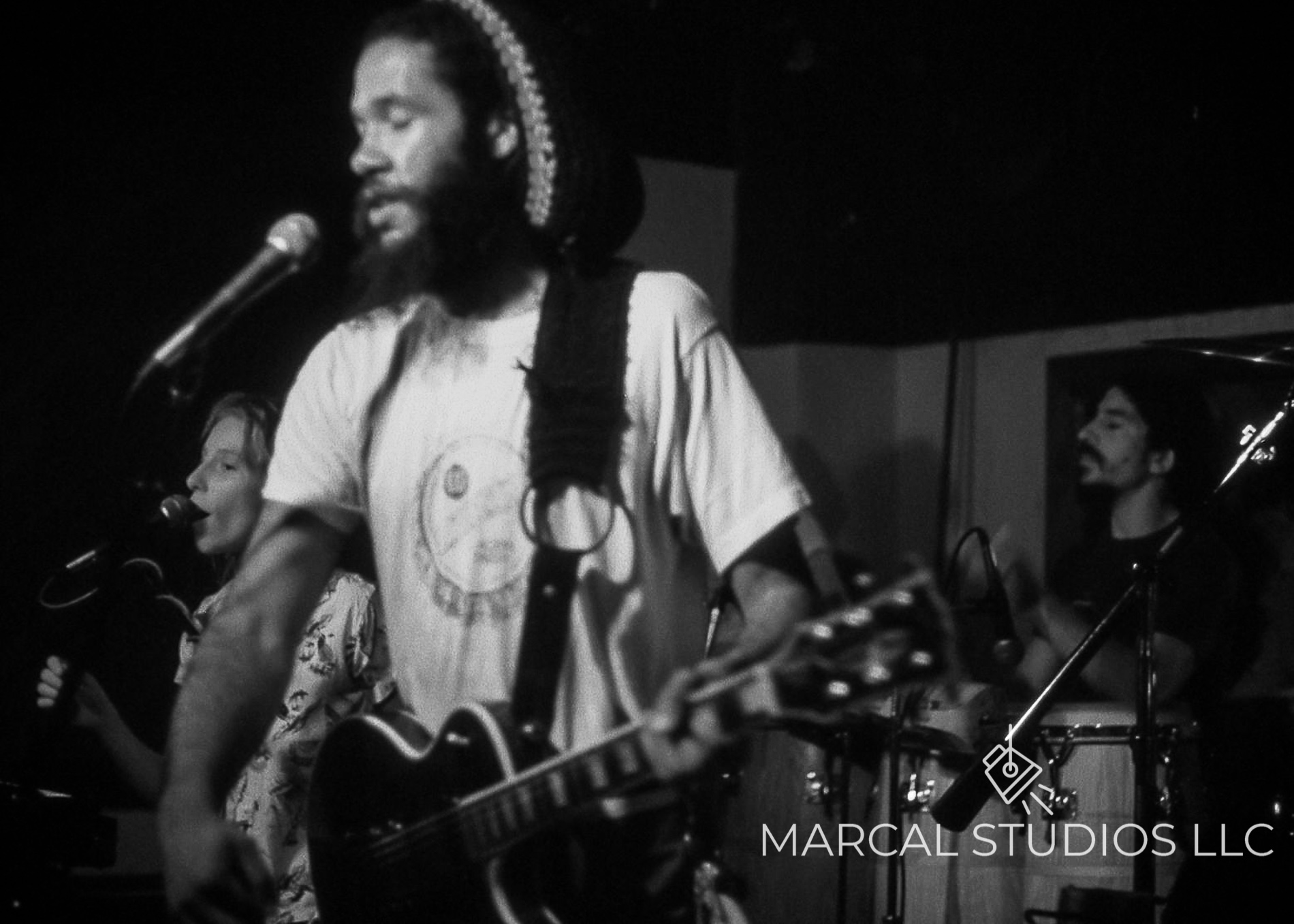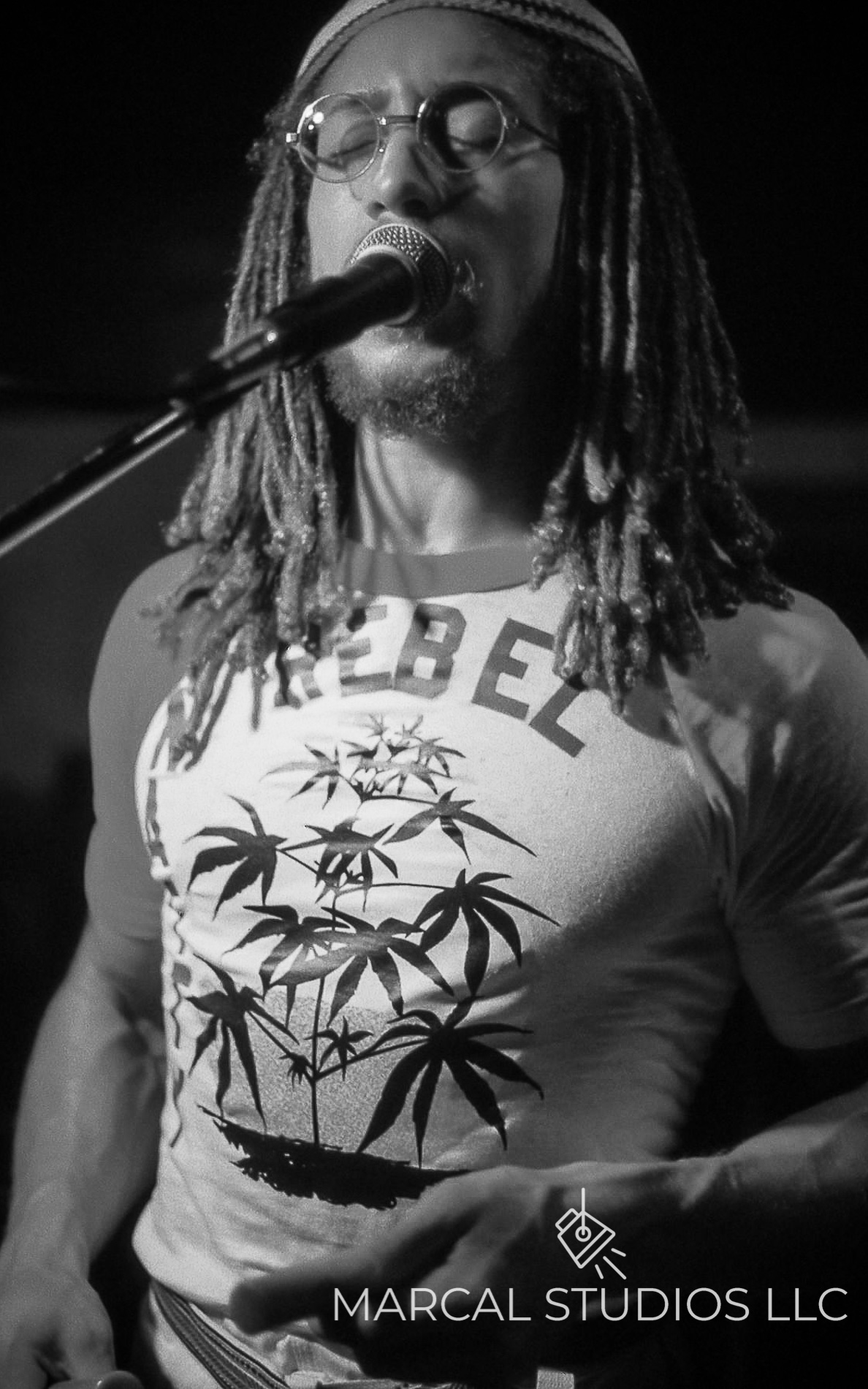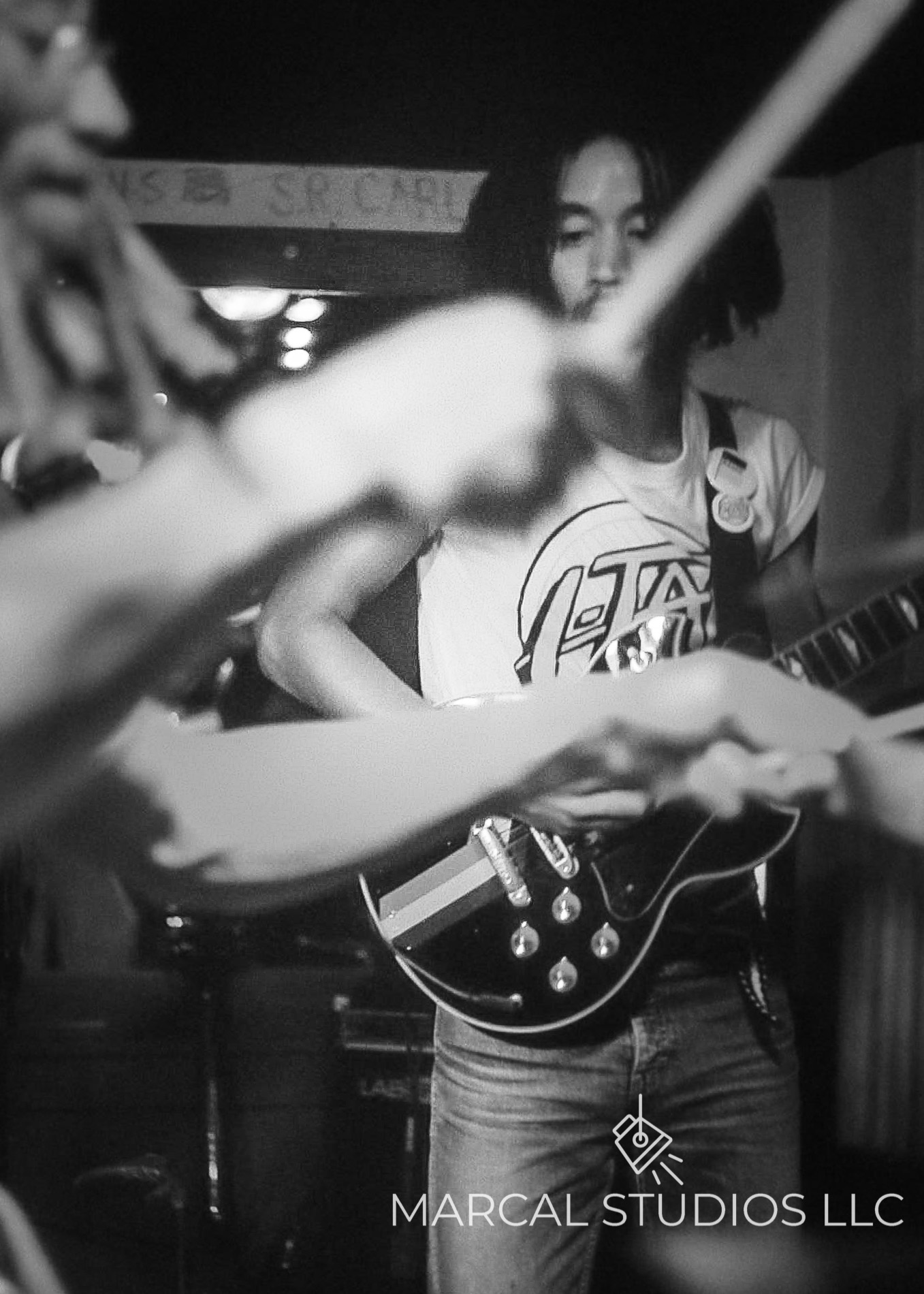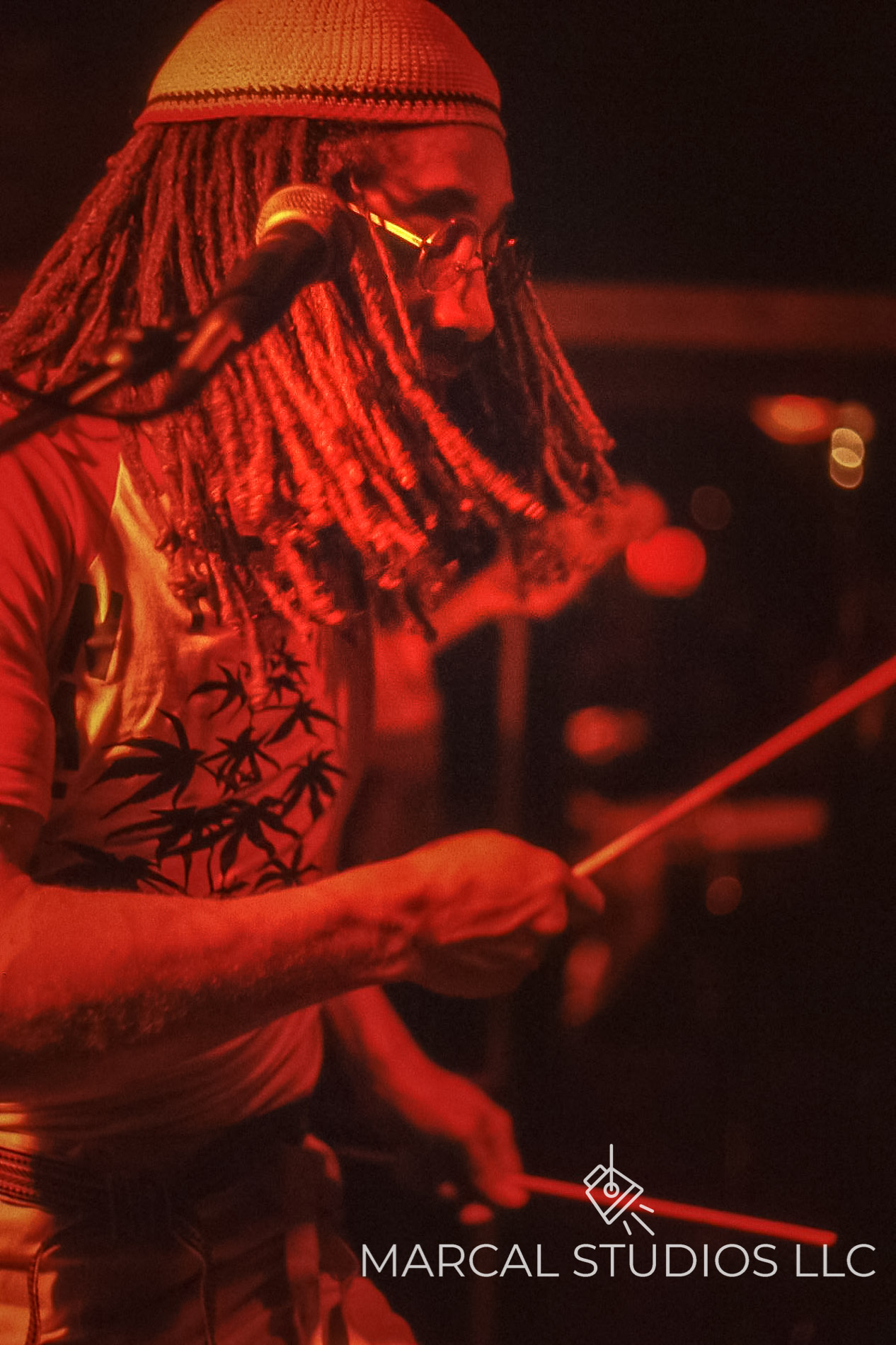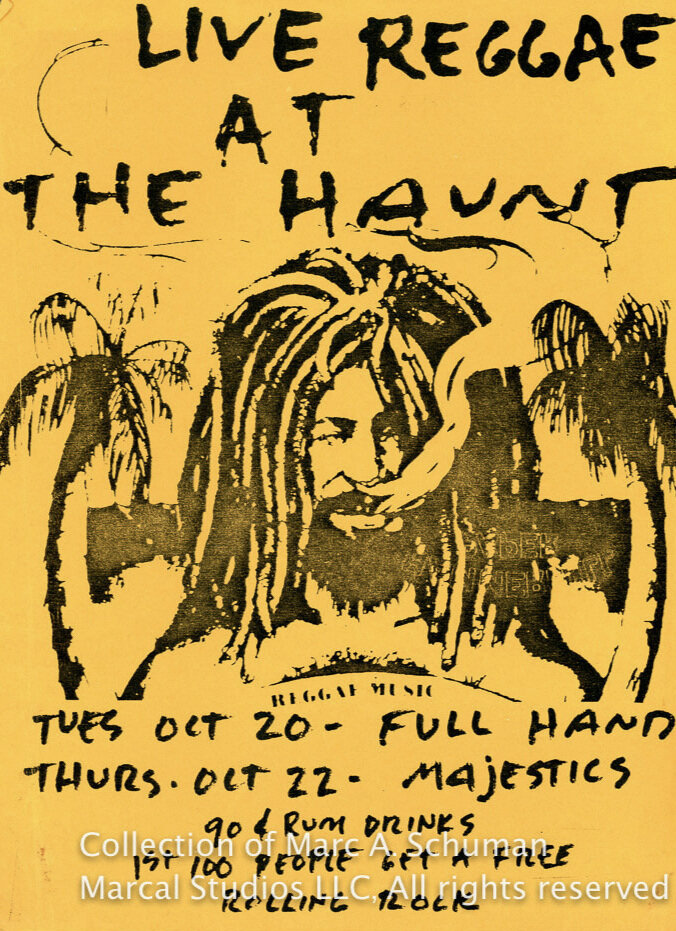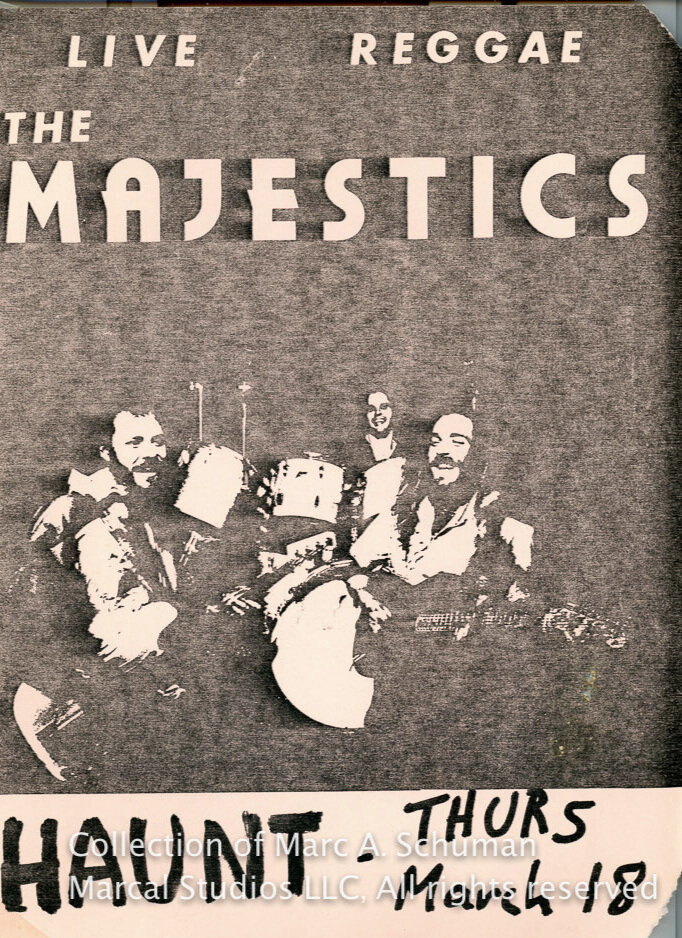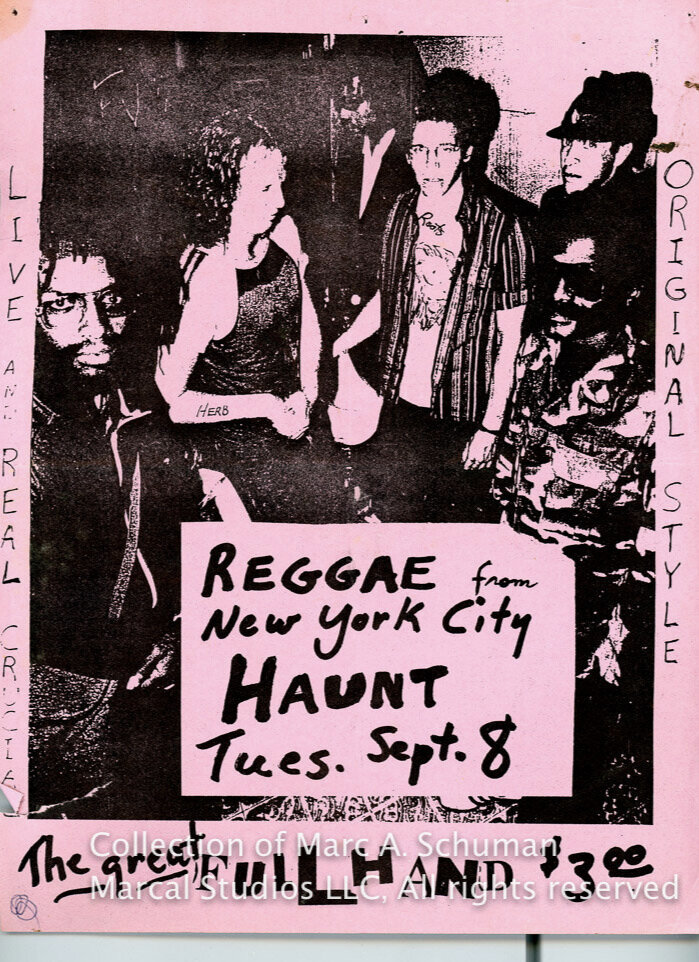The Haunt; Ithaca NY, 1982
The Haunt
I brought my camera to the club for one of the reggae shows, and have a few shots of what it looked like in the Haunt. When you entered the club, straight ahead and to the left was the bar, and to the right was the stage; most of the middle area from the stage back became a dance floor every night. These photos are facing the stage and unfortunately don’t show other views of the club - there were large photo prints and mirrors around on the walls, everything was made of what seemed like raw wood, and the bar had some basic christmas-tree lights around it. Here you can see some of the big rectangular mirrors in which you could see people on the dance floor reflected from behind the stage, and the reggae colors painted boldly on the back wall.
Among the great things they had up on the wall were the “annual photos” taken on a day each springtime. Hundreds of people would crowd into the alley at happy hour for one big super-wide angle shot of everyone, and they would blow the photos up big and hang them in there.
Slideshow below: The Cleveland-based band I-Tal playing at The Haunt in Ithaca, NY, 1982.
